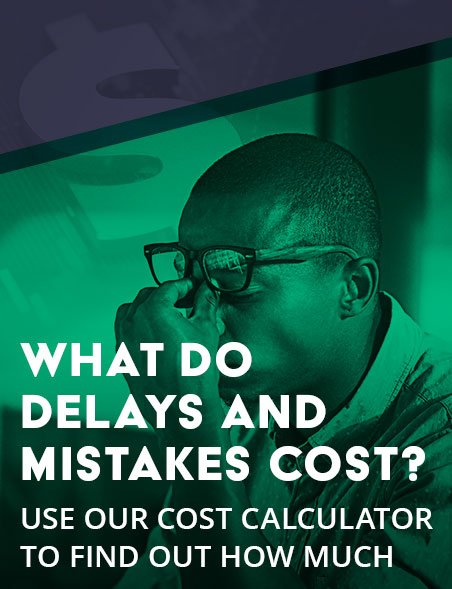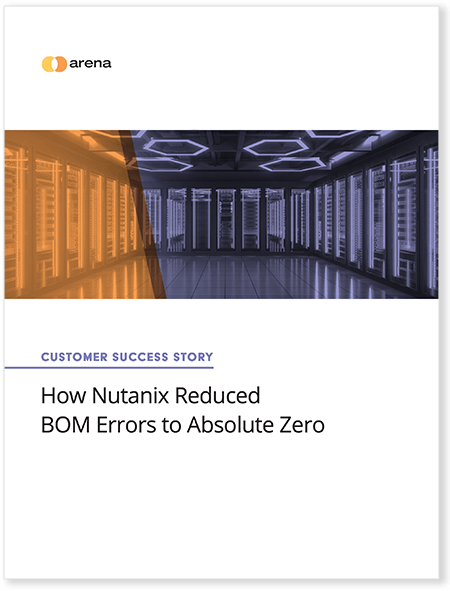Supply Chain Management and Collaboration: Managing supply chain risks
Introduction: Supply Chain Risk Management

In a world defined by a diverse global marketplace, supply chain risk management has become essential not only for ensuring success but also for preventing failures. Today most companies rely heavily upon one another for materials, personnel, and information. Ideally, the goals of these entities are aligned, and the moving parts are both consistent and efficient. However, even if goals and processes are aligned, a supplier network with multiple dependencies and inadequate redundancies can easily be broken.
If your company relies upon global supply chain partnerships, then it is constantly vulnerable to external end-to-end risks such as natural disasters, political instability, and cybersecurity breaches; supplier risks such as production problems; distribution risks such as lack of capacity or cargo damage; and internal risks such as demand variability or personnel availability. Cultural gaps and miscommunication can also amplify these risks. And while domestic suppliers may be less vulnerable to the kinds of risks associated with global supply chains, they too can be broken by product recalls, equipment failures, factory fires, or misinformation.
Today’s supply chain risks are as diverse and complex as the global economy. However, your company can anticipate and mitigate these potential risks by considering how competing best practices may make you vulnerable, assessing potential risks, and adopting enterprise solutions that provide you—and your suppliers—with better visibility and accountability.
Anticipating & Mitigating Potential Risks
During the IndustryWeek-hosted webinar “Avoiding Supply Chain Pain”, Nutanix’s Chief Operating Officer, David Sangster, CIMdata’s Vice President of Research Stan Przybylinski and Arena’ Director of Product Marketing Scott Reedy discussed the challenges and best practices for mitigating and managing risks to achieve supply chain excellence. In a follow-up interview with Arena, David Sangster elaborated on how Nutanix anticipates and mitigates potential supply chain risks—and, perhaps more importantly, how his company learns from its past mistakes.
Best Practices Make Your Company Vulnerable to Supply Chain Disruption
Traditional manufacturing best practices that your company has worked so hard to put in place may have actually made it more vulnerable to supply chain disruptions. This seems counterintuitive, says Sangster, but “consider that while Just-in-Time (JIT) manufacturing practices reduce inventory costs and streamline operations, these initiatives also leave little to no buffer of inventory, nor time to deal with supply or delivery glitches. Most companies rarely provide inventory buffer beyond that stemming from demand variability.” Supply chain risk management measures help to reevaluate your company’s manufacturing best practices, the ways in which they compete with one another, and how they may undermine your ability to ride out disruptions.
Manage Outsourcing Risks. Improperly managed supply chain partnerships create gaps in both information and quality. Possible savings provided by implementing best practices (e.g., Lean manufacturing) may be offset by the costs of any single supply chain disruption. By outsourcing manufacturing, you have limited control over sub-tier supplier selection, sourcing visibility, and performance of the end-to-end supply chain. Lead times tend to get longer, and logistics are far more complicated given today’s global supply chain dynamics. This increases the odds of delivery disruptions. Inevitably, outsourced manufacturing exposes your company to a new set of risks, including but not limited to political, regulatory, and currency shifts.
Supply Base Rationalization & Vendor Managed Inventory Risks. By selecting only the minimum number of suppliers with whom to engage and depending solely upon those suppliers’ need to have inventory on hand, your company increases its risk to get great products to market on time and on budget. When you depend on either a small number of key suppliers or a single supplier for a broader range of materials and services, you may reduce your costs and have fewer supplier dependencies. But what does your company do if a key supplier is faced with component shortages, logistics failures, or other unforeseen events?
Lean Approach & Just in Time Risks. In the case of Nutanix, says Sangster, “we were hard hit by the 2015 strike that affected West Coast ports. Because of our Lean/JIT approach, we were unprepared for the inventory shortfall and had to fly material in from overseas at considerable expense to meet our production demands.” Best practices like JIT minimize inventory costs but may increase vulnerability to external disruptions such as natural disasters, piracy in areas of unrest, port worker strikes, or political demonstrations.
The Worst Supply Chain Mistake Your Company Can Make
“Often companies ignore risks because they are overwhelmed by the number of things that can—and do—go wrong,” explains Sangster. But the risks don’t go away simply because your company doesn’t consider them. What’s the biggest mistake in risk management your company can make? Ignoring risks. Supply chain risks are real and must be managed to mitigate the impact to get products to market successfully. However, Sangster notes, “Like most things, little steps collectively start to make a big difference.”
Supply Chain Risk Assessment
Supply chain risk assessment is the first step your company can take to help anticipate, manage, and more importantly, mitigate risks. While it’s impossible to anticipate every potential supply chain risk, you can assess the likelihood of any potential risk by continually evaluating your supply chain, objectively assessing your vulnerabilities, employing models like commodity mapping—a method for understanding the geography of your supply chain and how environmental conditions may impact resources—and ranking potential risks.
Forward Thinking Can Help Your Company Manage Supply Chain Risk
Sangster also recommends that companies should be “proactive in seriously considering and assessing the impact of what can go wrong with your supply chain—and taking concrete steps to mitigate supply chain risks, being mindful of the fact that you can’t eliminate all supply chain risks entirely.” Nutanix has implemented several safeguards, focusing primarily on preventing poor quality and delivery disruptions. Still, Sangster suggests that adopting the following guidelines can help your company—from early start-ups to large global enterprises—anticipate and manage supply chain risk.
- Know who you do business with. Drive more business to high performing, ethical suppliers that hold sub-tier suppliers to high standards. Establish a supplier code of conduct and set clear expectations. Treat your sourcing partners as integral members of your delivery team.
- Use second or alternate sources for materials, maintain safety stock, and insist on guaranteed supply contracts whenever possible. These measures will serve to minimize delivery disruptions.
- Implement a product lifecycle management (PLM) solution to control the new product development (NPD) and new product introduction (NPI) processes. This provides the entire supply chain with visibility and the ability to collaborate effectively, ensuring high-quality products are produced and delivered to customers on schedule.
- Once you have your product record managed effectively, subscribe to a Supply Chain Event Management (SCEM) service that notifies you in real time of local and global events.
Supply Chain Management and Collaboration Software
Supply chain management software is a collection of software applications that assists with executing, tracking, and managing various essential supply chain management functions such as supplier communication and collaboration, distributing product design or part changes, supply chain transactions, and supply chain risk assessment and management. Finding the right solutions to manage your product data and provide visibility into your company’s supply chain is, perhaps, the most important thing you can do to offset your risks.
Secondly, implementing a PLM solution provides a foundation for easy supply chain collaboration between you and your supply chain partners in a secure and flexible manner.
By leveraging a cloud-based product lifecycle management (PLM) solution, it is easier for every member of your supply chain to access information anytime and anywhere in the world. It simplifies the management of your product record throughout the global supply chain and mitigates risks by ensuring real-time actions and visibility.
Supply Chain Risk Management – The Do’s and Dont’s
Your success depends on your supply chain as much as it does your products, services, and customers. But no matter how good you are, you still can’t eliminate every supply chain risk. You can’t prevent natural disasters or anticipate international revolutions. However, as David Sangster likes to say, “You can eat an elephant one tiny bite at a time.” By considering how your company’s best practices may make you vulnerable to supply chain risk, assessing the likelihood of given risks, choosing to create contingency plans, and adopting solutions that provide you and your suppliers with both visibility and accountability—you can eliminate many risks within your complex supply chain. You can take that first bite.





